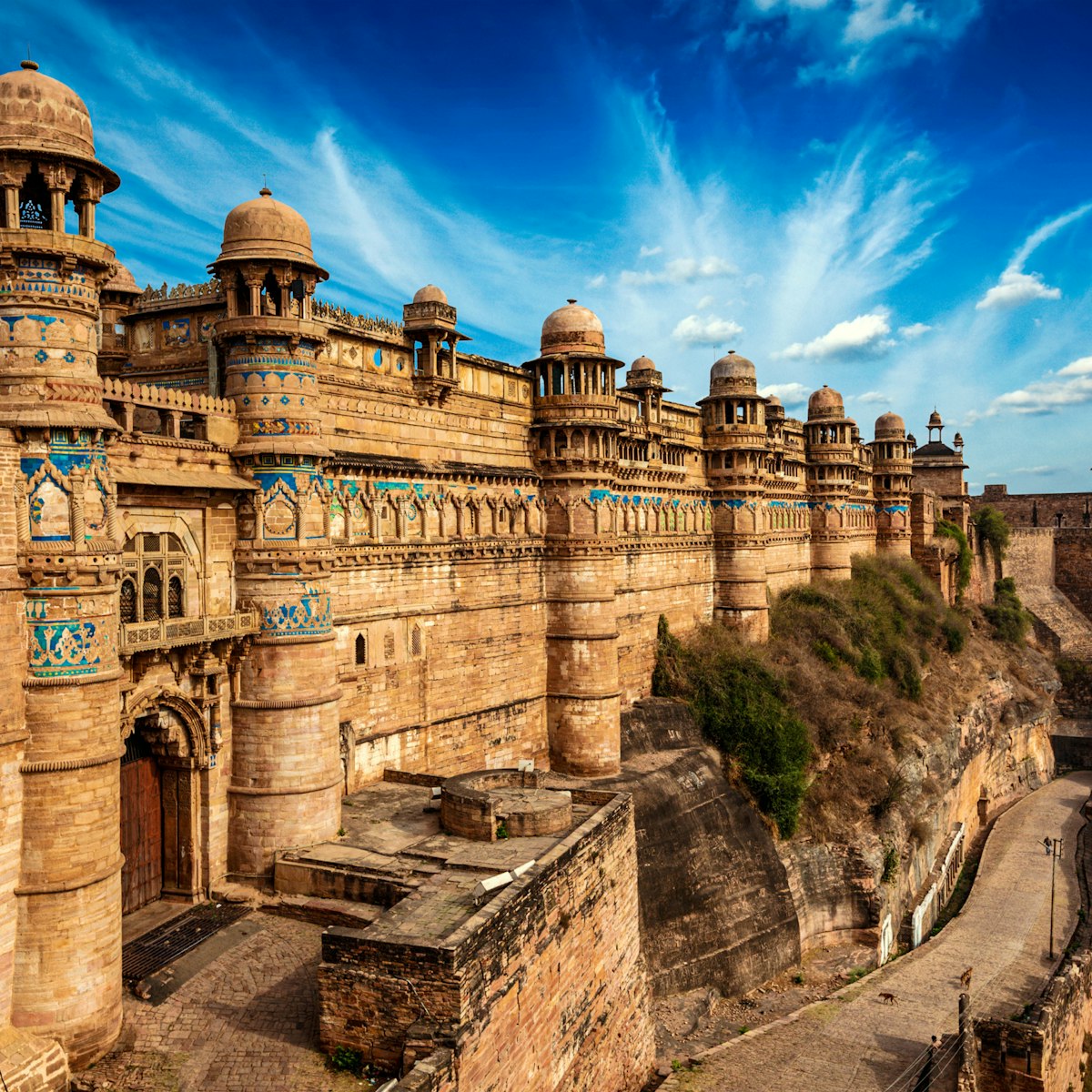Tucked away in a lawned compound in the Hazira neighbourhood, just off the southwest corner of the resplendent tomb of the Sufi saint Mohammed Ghaus, is the smaller, simpler tomb of Tansen, a singer much admired by the Mughal emperor Akbar and held to be the father of Hindustani classical music. Chewing the leaves from the tamarind tree here supposedly enriches your voice. Both men lived in the 16th century.
Lonely Planet's must-see attractions

0.78 MILES
Stretched majestically along the top of a 3km-long plateau overlooking Gwalior, the fort is a dominant, unmissable sight, full of fascinating palaces,…

0.66 MILES
This imperial-style palace, built by Tomar ruler Man Singh between 1486 and 1516, is definitely one of India's more quirkily decorated monuments: its…

Jai Vilas Palace & Scindia Museum
1.94 MILES
The museum occupies some 35 rooms of the Scindias’ opulent Jai Vilas Palace, built by Maharaja Jayajirao in 1874 using prisoners from the fort. The…

1.02 MILES
While there are sculptures carved into the rock at a few points around the fort, including on the way up from the Gwalior Gate, the most impressive is the…

1.16 MILES
Used as a drinks factory and coffee shop by the British after the First War of Independence (Indian Uprising) of 1857, this 30m-high, 9th-century temple…

0.52 MILES
This museum is housed in the 15th-century Gujari Mahal palace, built by Man Singh for his favourite rani (queen), next to the Badalgarh Gate. The entrance…

0.8 MILES
The Sasbahu, dating from the 9th to 11th centuries, are reminiscent of Central American Maya temples, with their dome- and pillar-covered roofs looking…

0.65 MILES
Just north of the Man Singh Palace is the entrance to the ruins of the Vikram Mahal, Karan Mahal and other dilapidated palaces in the north of the fort…
Nearby Madhya Pradesh & Chhattisgarh attractions
0.48 MILES
From the east a series of gates punctuates the worn steps of the path leading up to the fort. You enter from Fort Rd by the Gwalior Gate, dating from 1660.
0.49 MILES
The second gate on the eastern approach to Gwalior Fort, named after Badal Singh, Man Singh’s uncle.
0.52 MILES
The third of the surviving gates on the eastern approach to Gwalior Fort, built in the 15th century.
4. State Archaeological Museum
0.52 MILES
This museum is housed in the 15th-century Gujari Mahal palace, built by Man Singh for his favourite rani (queen), next to the Badalgarh Gate. The entrance…
0.58 MILES
A small four-pillared Hindu temple to the hermit Gwalipa, after whom both fort and town are named.
0.6 MILES
Probably dating from the 14th century, this is the fourth gate you pass through on the way up to Gwalior Fort from the east side.
0.6 MILES
You’ll pass a 9th-century Vishnu shrine known as the Chaturbhuj Mandir before reaching the fourth gate on the eastern approach to Gwalior Fort.
0.64 MILES
The fifth and final gate on the eastern path up to Gwalior Fort is the Hathi Gate, built in 1516, with its two tall towers. Through here you enter the…

